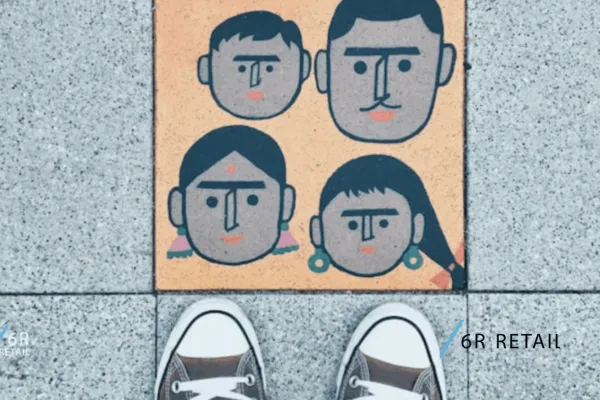
Why Real Retail Project Success Happens After Go-Live?
Sometimes, the risks of unchecked box-ticking aren’t just theoretical-they’re alive and wilting in your own backyard. Cue the Azalea Massacre [newsletter readers will know what I’m talking about]: a hedge trimmer-wielding contractor, checklist in hand, reduced a wall of vibrant blooms to compost simply because “rules are rules.”
No situational awareness. No second thought. Just blind compliance-and devastated neighbours left staring at stumps where azaleas once flourished.
It’s the perfect metaphor for retail leadership: checklists are brilliant for safety, consistency, and ensuring essentials aren’t forgotten-just ask any airline or hospital. But when wielded without context or common sense, they choke out initiative and good judgement.
In other words, it’s what happens when change management loses its connection to real behaviour and people on the ground.
So, as we move from building behaviour and momentum, let’s put structure to work where it actually counts.
What Most Retail Leaders Get Wrong About Change?
Most retail leaders-and let’s face it, plenty of project managers-love the chase. Checklists, Gantt charts, graphs, progress trackers; we’re wired to enjoy ticking tasks off a list (or at least project managers are).
But in retail management, progress bars only tell you what’s been delivered, not whether it’s being used-or more importantly, used well.
Here’s the frustrating reality: launching to spec and (preferably) on time doesn’t guarantee adoption. It’s like installing self-serve checkouts, patting yourself on the back, then discovering your entire staff is still clinging to the old tills like Titanic survivors to the nearest floating door.
Without an intentional change management process, teams will most likely revert to what’s familiar, or invent new, less helpful habits out of sheer confusion or fatigue. It’s also where change management in leadership really matters-how leaders bridge that gap between systems and human habits.
Often, leadership behaviours set the tone. If managers treat change as a one-off milestone rather than an ongoing mindset, the entire team follows suit.
How 6R Retail Approaches It Differently
When 6R works with retail teams, the focus is broader. Beyond delivering tools, it’s also about changing actual behaviour. That’s where retail management solutions meet people and practice.
Yes, this means supporting individuals to shift habits-but it needn’t pile another task into your overflowing JD folder. Blending a few key change moves during delivery is both the hardest and easiest part.
Hard, because habits (like social media snacking or that supermarket biscuit aisle) are entrenched. Easy, because individual behaviour is the one thing each of us can control.
Consider managing a retail expansion plan pilot: a retail project manager might leave room for dialogue around what’s different between the “aspirational” and the “actual.” That includes capturing user feedback, missed configurations, and awkward hiccups in a safe environment.
Pilots, proof-of-concepts, and real-time feedback loops are your best dress rehearsals. Tweak as you go. Build on the small wins-and don’t sweat the occasional faceplant; they build momentum.
This approach is grounded in behavioural theory in leadership, where changemakers don’t fear failure (much); they know it’s the fuel that builds long-term engagement.
Your Three-Step Sanity Check
If you’ve ever wondered what is change management in practice, these steps make it tangible for your retail projects.
1. Habit Audit
Ask early and often, “How will we support people to change their habits?” Don’t skimp-make it a project checkpoint, not an afterthought. Consider drafting a simple change management template to keep it front of mind.
2. Pilot and Practice
If your project lends itself to piloting, grab the opportunity. Capture the gap between what’s dreamed up and what’s actually doable. It helps you see the what is change management process in motion-how real adoption happens, step by step.
3. Measure Adoption
Add one measure (even a basic self-assessment) to track how change is sticking. Give teams breathing space-at least a month post go-live-to let new behaviours settle before calling it done.
Practical Solutions
Blend change management, don’t bolt it on. Retailers rarely have an extra team just for change. Instead, fold empathy, clear comms, and visible progress tracking into your standard PM approach-this is how to manage a team as a leader through transition.
Empower trial and error. Small pilots, visible progress, and open feedback encourage safe experimentation and rapid course correction.
Track engagement, not just delivery. Ask for honest feedback in your regular project updates. Use peer benchmarking to measure project success-and if you’re wondering how do you measure success of a project that’s about people, not just systems-start here.
Maintain a Positive Outlook
Even the best project managers get tripped up by snacking on the wrong metrics. Focus on experiments, open conversations, and actual habit change. It’s the retail version of how to improve self esteem-small wins build confidence, both individually and organisationally.
Retail project success depends on collaborative, behaviour-aware leadership, not “set and forget” launches.
Remember: the best projects aren’t finished at go-live. They’re just getting started.
Retail improvement, made practical.
Leadership thinking that drives change.
Sign up to receive new articles and strategic guidance.

